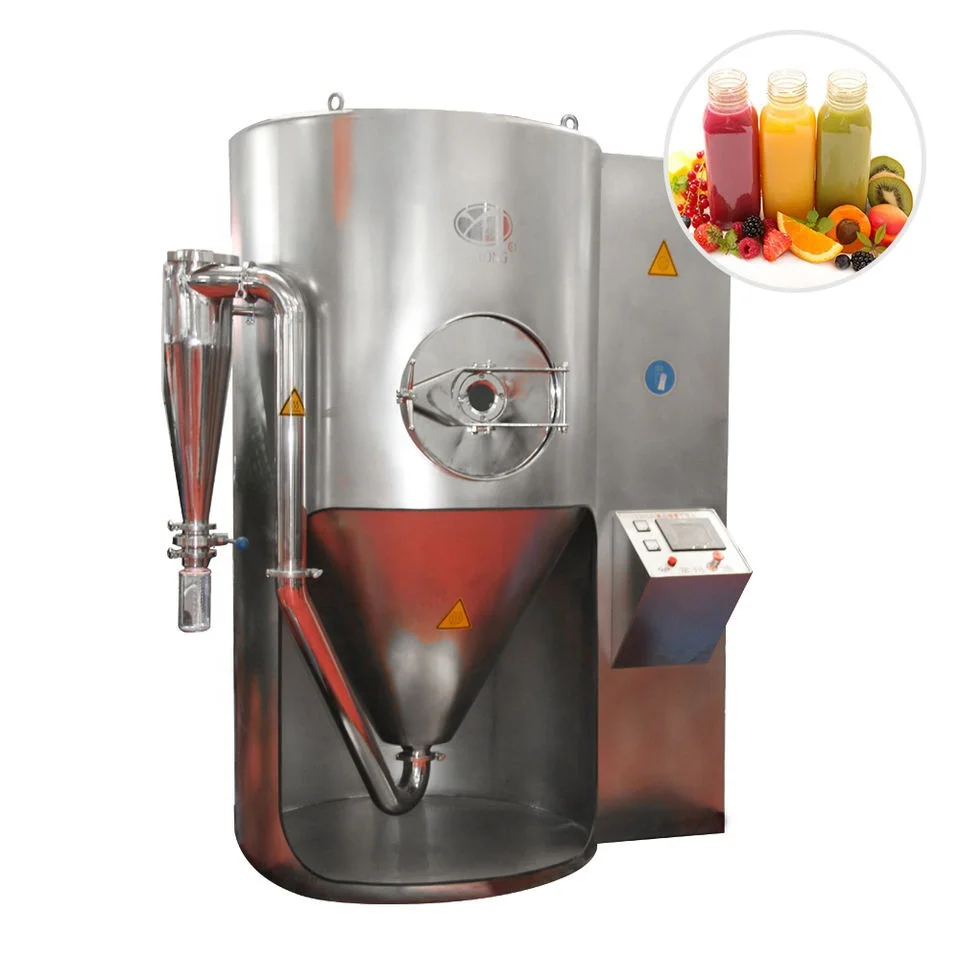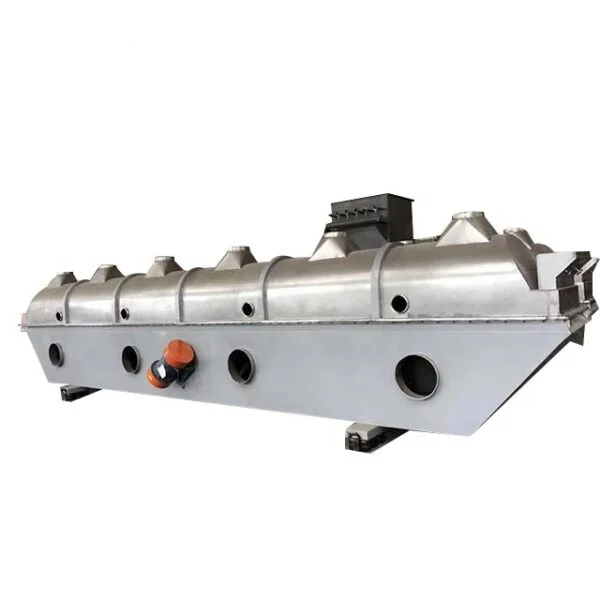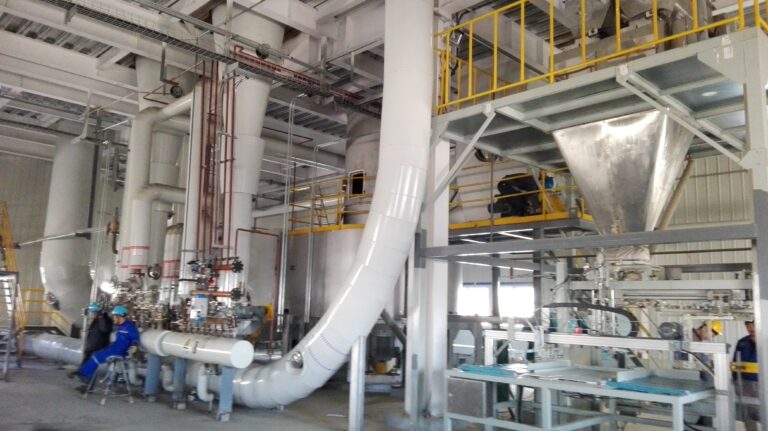A Comprehensive Guide to Spray Dryer Design in 2025

Spray dryer design is very important for industries in 2025. This technology helps industries work with precision and efficiency. For instance, spray drying turns liquids into powders while keeping quality high. It is widely used in food processing and making medicines.
The global market for spray drying equipment may reach $6.72 billion by 2025. It is growing at a yearly rate of 8.3%. Food and drink industries play a big role in this growth. Their earnings might grow from $506.3 billion in 2021 to $856.9 billion in 2025. Clean spray dryer designs are crucial for delicate products. They ensure safety for items like baby formula and medicines.
Key Takeaways
Spray drying changes liquids into powders while keeping them high quality. This method is important for food and medicine industries.
Spray dryers have atomizers, drying chambers, and powder collectors. Each part helps make good products and work efficiently.
Saving energy is very important for spray dryers in 2025. Tools like heat recovery systems can lower energy use a lot.
Automation makes spray dryers more accurate and wastes less. Smart machines change settings quickly to keep products good.
Being eco-friendly is more important now. Green spray dryer technology cuts pollution and follows environmental rules.
Basics of Spray Drying
Spray drying process overview
Spray drying changes liquid into powder using hot gas quickly. It is common in food, medicine, and chemical industries. This method works fast and keeps products high-quality.
The process has three main steps:
Atomization: Liquid is turned into tiny drops by a nozzle.
Drying: Hot air removes water from the droplets.
Powder Collection: Dry particles are gathered in a chamber or separator.
Important factors like air temperature, nozzle pressure, and liquid flow affect drying. For example, the drying speed depends on air temperature and water evaporation. These factors impact the powder’s density and leftover solvents.
Key components in spray dryer design
Good spray dryers work well and make quality products. Main parts include:
Atomizer or Nozzle: Makes small drops from liquid. Drop size and spray shape depend on nozzle design and settings.
Drying Chamber: Hot air dries the drops inside this space. The chamber’s surface can affect product amount and sticking to walls.
Heating System: Provides hot air for drying. Air temperature and flow must be controlled to avoid bad drying.
Powder Collection System: Collects dry particles using tools like cyclone separators or filters.
A study showed gas flow changes caused wall sticking, lowering yield. This shows why controlling process settings is important.
Key Component | Evidence Supporting Effectiveness |
|---|---|
Gas Flow Variability | Changes from a particle size tool caused wall sticking, reducing yield. |
Surface Finish | Chamber surface finish may affect results and needs more study. |
Process Parameters | Checking gas flow changes during tool use helps improve yield. |
Atomization and drying principles
Atomization breaks liquid into tiny drops, making drying faster. Drop size, nozzle shape, and liquid traits like thickness and tension matter.
Drying happens in two steps:
First Stage: Water leaves the drop surface at a steady rate.
Second Stage: A dry shell forms, and water moves through it to finish drying.
Spray drying is useful for many products. It makes milk powder for food and inhalable drugs for medicine. The spray drying market may grow to $7.5 billion by 2028, with a yearly growth of 6.8%. This shows the need for better drying tools.
Types of Spray Dryers

Single-stage spray dryers
Single-stage spray dryers are the easiest type to use. They dry liquid drops in one step inside the drying chamber. This method works well for products that dry fast and handle heat. These dryers are often used in food and chemical industries because they are quick and simple.
But, single-stage dryers can have problems with efficiency and quality. Studies show that spray gas flow and air temperature affect results. For instance, higher air temperatures dry faster, but uneven gas flow lowers yield. The table below shows these effects:
Parameter | Effect on Process Yield (%) | Significance (p-value) | F-value |
|---|---|---|---|
L-isoleucine concentration | Hurts yield | < 0.05 | > 1 |
Spray gas flow | Hurts yield | < 0.05 | > 1 |
Inlet temperature (Tin) | Helps yield | < 0.05 | > 1 |
R² values | < 0.2 | – | – |
Adequate precision ratio | > 4 | – | – |
This shows why controlling settings is key for better results.
Multi-stage spray dryers
Multi-stage spray dryers add extra steps to improve drying. The first step uses hot air to remove most water. The next step uses cooler air to finish drying gently. This helps protect delicate materials.
These dryers are common in industries needing high-quality powders. Examples include making medicines and baby formula. They are great for heat-sensitive products where quality is very important.
Hygienic spray dryer design for sensitive industries
Hygienic spray dryers are made for industries like medicine, biotech, and food. They follow strict rules to keep products clean and safe from germs.
Groups like the FDA, NSF, and EHEDG set these rules. For example:
FDA: Makes safety rules for food equipment.
NSF: Focuses on keeping food tools clean.
EHEDG: Shares tips for stopping germs.
Modern hygienic dryers follow these rules closely. Some designs remove cracks to make cleaning easier. Others drain fully to stop contamination. These features make them perfect for sensitive products.
Advantages and Disadvantages
Benefits of spray drying technology
Spray drying has many benefits for different industries. It dries materials quickly while keeping them in good condition. This makes it great for delicate items like medicines and food. It also creates particles of the same size and quality, which is important for these products. Spray drying improves how well things dissolve and allows flexible designs for various items.
Here’s how industries use spray drying:
Industry Sector | |
|---|---|
Food | Makes powdered foods, keeps taste, color, and nutrients safe |
Pharmaceuticals | Improves dissolving and stability of medicine ingredients |
Chemicals | Produces industrial chemicals with steady quality |
Cosmetics | Allows flexible designs for cosmetic products |
Examples show how spray drying works well. One study improved a drug called Deucravacitinib, helping it get approved. Another study showed better delivery of filters for kids, reaching over 60% efficiency. These examples prove spray drying boosts performance and meets safety rules.
Challenges in spray dryer design
Spray dryer design has some problems despite its benefits. It costs a lot to buy advanced systems, which can be hard for smaller companies. Running these systems is tricky and needs careful control, raising costs and training needs.
Following safety rules is another challenge. Groups like the FDA and USDA have strict rules, and breaking them can lead to fines or recalls. Older systems use too much energy and create pollution, pushing companies to find cleaner options. Problems with suppliers can slow production and raise costs, especially when using global sources.
Comparison with other drying methods
Spray drying is better than other drying methods in many ways. Freeze drying keeps nutrients but is slower and costs more. Drum drying can harm product quality because heat spreads unevenly.
Studies comparing spray drying to freeze drying and electrostatic spray drying show its strengths. Spray drying makes high-quality products and works well for large-scale production. Other methods often struggle with efficiency and scaling up.
When picking a drying method, think about energy use, product quality, and safety. Spray drying balances these well, making it a top choice for many industries.
Applications of Spray Dryers

Food and beverage industry
Spray drying is very useful in food and drinks. It helps make products like instant coffee, milk powder, and flavorings. This method creates smooth powders with the same particle size. These powders are important for food industry needs. More people want easy-to-make and healthy foods, so spray drying is popular.
Here’s why spray drying works well for food and drinks:
It keeps the taste, color, and nutrients of food.
It makes powders with even sizes for better mixing and texture.
It allows large production to meet growing demand.
For example, spray dryers help make powdered milk that stays nutritious. Flavorings made this way mix easily in recipes, improving taste and cooking results.
Pharmaceutical and chemical applications
Spray drying has changed how medicines are made. It solves problems like poor solubility and low absorption in the body. This method is often used to make drugs with specific particle sizes.
Study Title | Summary |
|---|---|
Pharmaceutical Particle Engineering via Spray Drying | Shows how particle size affects drug quality. |
Data-Driven Modeling of the Spray Drying Process | Explains how settings change product features. |
Predicting Spray Dried Dispersion Particle Size | Proves spray drying improves drug dissolving and absorption. |
In chemicals, spray drying ensures steady quality for industrial products. It also helps make heat-sensitive materials, making it useful for many industries.
Using spray drying gives better control over product quality. It also meets strict safety rules, making it a key tool for medicine and chemical makers.
Innovations in biotechnology and nanotechnology
Spray drying is helping new ideas in biotech and nanotech. It is used to make things like drug powders, microcapsules, and vaccines. This process is affordable and works well for big projects.
Key Findings | Description |
|---|---|
Spray Drying Method | |
Temperature Control | Keeps nanoparticles stable during the process. |
Excipient Use | Mannitol is a top choice for tiny particles. |
Performance Metrics | Creates fine particles for better aerosol use. |
Spray drying is also important in nanotech. It helps make tiny particles that are stable and work better. For example, it is used to create vaccines that are easier to store and move.
Here’s why spray drying is great for these fields:
It can be repeated and scaled up for big production.
It improves how products dissolve and work in the body.
It fits many uses, from medicine to advanced materials.
Spray drying opens new doors in biotech and nanotech. It helps create smart solutions for medicine and other areas.
Key Considerations for 2025
Energy efficiency in spray drying
Saving energy is very important for spray dryers in 2025. New technologies can help cut energy use a lot. For example, heat recovery systems save up to 30% of energy. These systems reuse leftover heat, so less outside energy is needed.
Other tools like better atomizers and speed controls also save energy. Improved insulation stops heat from escaping, using energy wisely. The table below shows how these technologies affect energy use:
Energy-Saving Technology | Impact on Energy Use |
|---|---|
Heat recovery systems | Cuts energy use by 15-30% |
Multi-stage drying configurations | N/A |
Optimized atomization systems | N/A |
Variable speed drives | N/A |
Intelligent control systems | N/A |
Insulation improvements | N/A |
Using these tools lowers costs and makes spray drying more eco-friendly.
Automation and smart spray dryer design
Automation is changing how spray dryers work. Smart dryers use sensors and controls to save energy and improve accuracy. These systems adjust settings instantly to keep product quality steady.
Big companies like GEA Group AG and SPX FLOW are leading this change. They are creating better automated systems to save energy and reduce waste. For example, these systems fine-tune drying to avoid wasting resources.
Smart spray dryers make work easier and more efficient. They are perfect for industries needing to produce large amounts quickly.
Sustainability and eco-friendly advancements
Eco-friendly spray dryers are a big focus in 2025. Energy-saving dryers lower pollution and protect resources. Adding solar power systems can also reduce harm to the environment.
Predictive maintenance helps by fixing problems before energy is wasted. Automatic cleaning systems save water and energy while keeping machines clean.
Using green technology helps meet environmental rules and shows responsibility. These tools not only help the planet but also make your business stand out as eco-friendly.
Spray dryer design is a strong tool for making powders. It uses smart controls, live monitoring, and data to improve results. But, it can be tricky to set up and costs a lot at first.
Category | Benefits | Challenges |
|---|---|---|
Control Strategies | Hard to set up and keep running advanced systems. | |
Monitoring Measurements | Live data helps make better-quality products. | Needs money for tools and worker training. |
Emerging Technologies | New ideas like AI and better nozzles could help. | Unsure if they will work well or fit easily. |
By 2025, using spray drying keeps you ahead and saves energy. Future tools like AI and green tech will change the game. These updates give you a chance to lead in your industry.
FAQ
What industries use spray drying the most?
Spray drying is common in food, medicine, and cosmetics. It makes powdered milk, medicines, and makeup powders. It’s great for making particles the same size every time.
How is spray drying better than other drying methods?
Spray drying is faster and gives better results than freeze or drum drying. It makes high-quality products and works well for big production needs. Other methods are slower and harder to scale up.
Can spray dryers work with heat-sensitive materials?
Yes, multi-stage spray dryers are good for heat-sensitive items. They use cooler air at the end to protect things like baby formula and medicine powders.
What industries use spray dryers?
Spray dryers are used in chemical production and making advanced materials. They keep quality steady and work well with heat-sensitive products. This makes them useful for many industries.
Are spray dryers good for the environment?
Modern spray dryers save energy with tools like heat recovery systems and smart controls. These features lower energy use and pollution, making them better for the planet.






